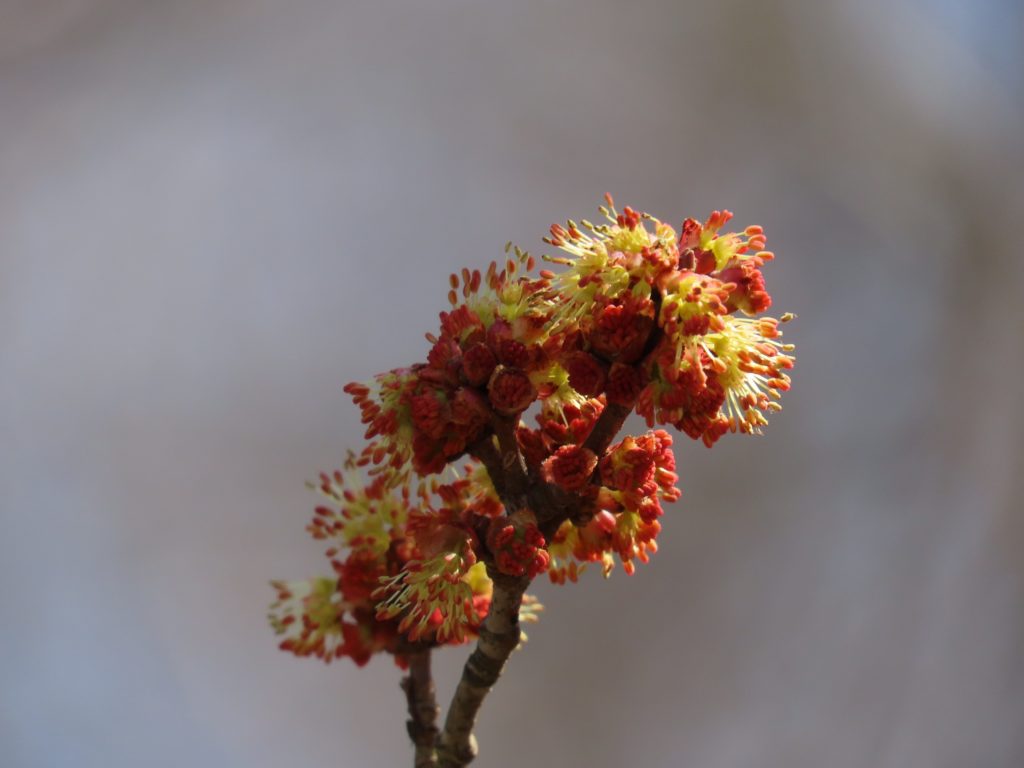
What’s in Bloom | Maple
March, 24, 2021
Maples (genus Acer) are deciduous trees with oppositely-arranged lobed leaves and winged fruits called samaras. There are eight species of maple native to Virginia: the sugar maple (Acer saccharum), red maple (Acer rubrum), silver maple (Acer saccharinum), striped maple (Acer pensylvanicum), mountain maple (Acer spicatum), black maple (Acer nigrum), southern sugar maple (Acer floridanum), and the boxelder (Acer negundo). In addition to these native species, cultivars of the non-native Norway Maple (Acer platanoides) are commonly used in landscaping across the state.
Maples are among the first trees to flower, producing umbels, panicles or fascicles of small flowers in the late winter or early spring. Many maple species, can be either monoecious, meaning the one tree produces both male and female flowers, or dioecious, meaning that each individual tree produces either only male or only female flowers.
Maples have many horticultural and commercial uses. Many maple cultivars have been bred for use in landscaping for their vivid autumn foliage. Larger species of maple including the red maple and the sugar maple are tapped for sap in the late winter to produce maple syrup by individuals and commercial business alike. Some maples, particularly sugar maples, produce valuable hard timber and tonewood used to produce items ranging from baseball bats to musical instruments.
Benefits to Biodiversity | Maple species are often browsed by deer, and they provide seeds and nesting sites used by squirrels and a variety of birds. Their early-blooming flowers make them an important early-spring resource or bees and other pollinators. Maple species are also larval hosts for a variety of moths and butterflies, including the colorful rosy maple moth (Dryocampa rubicunda).

